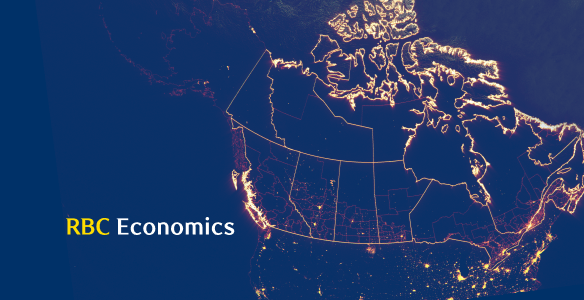The Bottom Line:
April’s headline inflation rate came in close to expectations at 1.7% (down from 2.3% in March) but with the drop entirely from the removal of the consumer carbon tax from energy products.
Measures controlling for that tax change (including the BoC’s preferred median and trim inflation measures) surprised on the upside. Higher prices for motor vehicles and groceries could reflect the early impact of tariffs, but the broader upside surprise in core measures was also driven by domestically produced services ( including home rents, restaurant meals, and travel tours) rather than concentrated in imported products.
We expect Canadian retaliatory tariffs to have a limited impact on consumer prices (See issue in focus here for more) and with the downward impact from the carbon tax removal mechanically keeping inflation at or around the Bank of Canada’s 2% target into early next year.
But the BoC will be more concerned about growth in their preferred core price measures, which should not be impacted by tax changes. Those were already showing signs of acceleration in months before tariffs were imposed and accelerated broadly to (year-over-year) rates above the central bank’s 1% to 3% target range in April for the first time since June 2024.
Our own base case expectation has been that a softening economic growth backdrop will ultimately push the BoC to cut the overnight rate down to 2.25% in the summer (from 2.75% currently) after skipping a reduction in April. But the central bank will need to balance that pessimistic growth outlook with inflation pressures — and the latest upside inflation surprise means it could well now take downside economic growth surprises to justify further cuts.
The Details:
-
Headline CPI in Canada came in at 1.7% year-over-year in April, down from 2.3% in March. This outcome was largely in line with our forecast of 1.6%. But details were concerning with underlying inflation showing signs of acceleration outside of the mechanical reduction in prices from the removal of the consumer carbon tax in most provinces in April.
-
The moderation in year-over-year CPI growth in April was primarily driven by a significant drop in energy prices (-12.7% y/y), driven by the removal of the carbon tax.
-
The Bank of Canada’s preferred “core” inflation measures—CPI-trim and CPI-median (which exclude the impact of tax changes)—edged up to 3.1% and 3.2%, respectively, in April on larger-than-normal 0.4% month-over-month increases. Notably, this represents the first time these metrics have surpassed the 3% threshold on year-over-year basis since the first half of 2024.
-
Higher vehicle and food prices could reflect the early impact of tariffs, but the broader upward surprise in core measures also came from growth in prices of services.
-
Restaurant prices surged by another 3.6%, building on the 3.2% rise recorded in the previous month, as price adjustments followed the conclusion of the GST/HST tax holiday.
-
Travel tours delivered an unexpected surprise to the upside, climbing 6.7% year-over-year. This increase more than offset the 4.7% decline observed in March.
-
Energy inflation moderated in March, with lower gasoline prices providing some relief to consumers and offsetting increases elsewhere in the basket.
-
Shelter inflation continued its slow pace of moderation. Mortgage interest costs extended their downward trajectory, though they remain elevated. Meanwhile, rents rebounded in April, partially offsetting the progress made in late 2024..
-
While growth in broader inflation metrics in April was concerning, one positive is that the increase does not appear to have been overly broadly based. Roughly 48% of the CPI basket experienced inflation rates above 3% (on a three-month annualized basis), actually down slightly from 51% in March and approximately 40% two quarters earlier.
This article is intended as general information only and is not to be relied upon as constituting legal, financial or other professional advice. The reader is solely liable for any use of the information contained in this document and Royal Bank of Canada (“RBC”) nor any of its affiliates nor any of their respective directors, officers, employees or agents shall be held responsible for any direct or indirect damages arising from the use of this document by the reader. A professional advisor should be consulted regarding your specific situation. Information presented is believed to be factual and up-to-date but we do not guarantee its accuracy and it should not be regarded as a complete analysis of the subjects discussed. All expressions of opinion reflect the judgment of the authors as of the date of publication and are subject to change. No endorsement of any third parties or their advice, opinions, information, products or services is expressly given or implied by Royal Bank of Canada or any of its affiliates.
This document may contain forward-looking statements within the meaning of certain securities laws, which are subject to RBC’s caution regarding forward-looking statements. ESG (including climate) metrics, data and other information contained on this website are or may be based on assumptions, estimates and judgements. For cautionary statements relating to the information on this website, refer to the “Caution regarding forward-looking statements” and the “Important notice regarding this document” sections in our latest climate report or sustainability report, available at: https://www.rbc.com/our-impact/sustainability-reporting/index.html. Except as required by law, none of RBC nor any of its affiliates undertake to update any information in this document.


